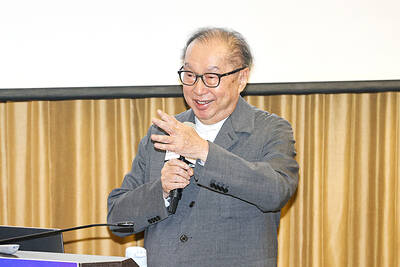China will provide low-interest loans to cable companies to convert 100 million urban households to digital television by 2008, a government official said.
The goal is to have all 380 million households in China on digital technology by 2015, providing sharper pictures and access to interactive services such as home shopping. About 280,000 households nationwide are now digital.
Skyworth and other digital TV makers including Samsung Electronics Co and Sony Corp are set to benefit from the new government policy, as will overseas broadcasters such as News Corp and Viacom Inc, which will have access to what was a restricted market. Viacom formed a production venture with Shanghai Media Group in April to make children's programming.
immediate benefits
"The policy has just been put in place but we already are benefiting," said Maggie Mak, investor relations manager of Hong Kong-listed digital TV maker Skyworth Digital Holdings, which makes TV sets in neighboring Shenzhen. "This national plan will help increase our sales."
Skyworth sold 330,000 digital TV sets last year and 80,000 set-top boxes for receiving digital signals from cable systems.
The company won a contract to supply China with set-top boxes and its shares shot up 8.3 percent in February after the announcement. Skyworth also makes sets for Korea's LG Electronics and Japan's Mitsubishi Electric Corp.
"We want to be a digital society," Wang Xiaojie, director-general in charge of digital TV at the State Administration of Radio, Film and Television, said in an interview in Beijing. "We want to phase out all analog and convert to digital by 2015. We are going to have to fund some of the technology required."
set-top boxes needed
The initial plan is to convert the 100 million urban households now on cable to digital television by 2008, Wang said. That would require at least US$7 billion worth of set-top boxes, based on the current cost of digital set-top box equipment.
"Subsidizing digital is a good investment for the state," said Jamie Davis, president of Star China, part of News Corp's China television unit. "Television has the potential to create jobs, wealth, tax revenue, and a better lifestyle for people here."
Digital television delivers better visual quality by encoding its signal as zeroes and ones -- the same digital code used in computers. The technology also allows for data transmission and the simultaneous broadcast of multiple channels, enabling interactive service such as pay-per-view movies, home shopping and stock trading.
"You'll see all kinds of entertainment on pay-digital TV," said Wang. "You'll see fishing channels, health channels, women's channels, children's channels. The only thing we don't allow is adult content, nudity or politically sensitive information. But everything else will be available on pay TV."
China is among the world's top five television markets and second in Asia behind Japan in terms of advertising.
Spending on ads, before discounts and based on published rates, increased 45 percent in 2003 to US$45 billion, according to New York-based market researcher Nielsen Media Research.
China is far less digitized than more developed TV markets.
The US is already 99 percent digitized, while Japan is 80 percent digitized, according to Wang. "We're just beginning the process here in China," she said.
The subsidized rollout follows incentives offered by digital broadcasters in the UK, Taiwan and other markets as they attempt to develop new audiences for their services.
60 new stations
China's TV regulator approved 40 digital pay-TV channels last year, Wang said. Sixty more will be approved in the next two weeks, she said. The loans will be made through China Development Bank.
State-owned China Central Television, which has 15 channels, began operating six digital pay-TV channels last week. Many local Chinese TV stations also are getting into the new technology.
"Digital TV needs pay television and pay television needs digital television," said Sun Yusheng, president of CCTV's digital TV unit.
DVN, which has 46 percent of the set-box market in China now, is working with Qingdao Cable Co. in eastern China to develop a platform for value-added services, including games and entertainment, real-time information for stocks and other data.
"The concept is to create a new business model, with value-added services," said Terry Lui, DVN chief executive.
The Chinese government last year announced that Qingdao is the key city for the digital conversion. The government also picked 48 other cities for conversion.
e-government platform
Digital TV is priority for the Chinese government because it offers officials the opportunity to implement a direct information channel, or so-called e-government.
The government chose digital TV as an e-government platform rather than the Internet because China's personal computer penetration rate is so low. Only 7 percent of Chinese households have personal computers, while 100 percent have TV sets.
"In some communities, there is even household TV ratio of 1.5, which means some households have two TV sets or more," said Wang. "This is why we picked digital TV as a direct channel between government and the people, rather than the Internet."
Two-thirds of China's population lives in rural, sometimes remote, areas that don't have access to cable and will have to receive digital TV from satellite dishes or digital broadcasts by local TV stations.
"This will take a massive effort as the nation is so huge and the number of households so many," Wang said. Helping farmers pay for expensive digital TV sets is the only solution, she said.

SEASONAL WEAKNESS: The combined revenue of the top 10 foundries fell 5.4%, but rush orders and China’s subsidies partially offset slowing demand Taiwan Semiconductor Manufacturing Co (TSMC, 台積電) further solidified its dominance in the global wafer foundry business in the first quarter of this year, remaining far ahead of its closest rival, Samsung Electronics Co, TrendForce Corp (集邦科技) said yesterday. TSMC posted US$25.52 billion in sales in the January-to-March period, down 5 percent from the previous quarter, but its market share rose from 67.1 percent the previous quarter to 67.6 percent, TrendForce said in a report. While smartphone-related wafer shipments declined in the first quarter due to seasonal factors, solid demand for artificial intelligence (AI) and high-performance computing (HPC) devices and urgent TV-related orders

BYPASSING CHINA TARIFFS: In the first five months of this year, Foxconn sent US$4.4bn of iPhones to the US from India, compared with US$3.7bn in the whole of last year Nearly all the iPhones exported by Foxconn Technology Group (富士康科技集團) from India went to the US between March and last month, customs data showed, far above last year’s average of 50 percent and a clear sign of Apple Inc’s efforts to bypass high US tariffs imposed on China. The numbers, being reported by Reuters for the first time, show that Apple has realigned its India exports to almost exclusively serve the US market, when previously the devices were more widely distributed to nations including the Netherlands and the Czech Republic. During March to last month, Foxconn, known as Hon Hai Precision Industry

Taiwan Semiconductor Manufacturing Co (TSMC, 台積電) and the University of Tokyo (UTokyo) yesterday announced the launch of the TSMC-UTokyo Lab to promote advanced semiconductor research, education and talent development. The lab is TSMC’s first laboratory collaboration with a university outside Taiwan, the company said in a statement. The lab would leverage “the extensive knowledge, experience, and creativity” of both institutions, the company said. It is located in the Asano Section of UTokyo’s Hongo, Tokyo, campus and would be managed by UTokyo faculty, guided by directors from UTokyo and TSMC, the company said. TSMC began working with UTokyo in 2019, resulting in 21 research projects,

Quanta Computer Inc (廣達) chairman Barry Lam (林百里) yesterday expressed a downbeat view about the prospects of humanoid robots, given high manufacturing costs and a lack of target customers. Despite rising demand and high expectations for humanoid robots, high research-and-development costs and uncertain profitability remain major concerns, Lam told reporters following the company’s annual shareholders’ meeting in Taoyuan. “Since it seems a bit unworthy to use such high-cost robots to do household chores, I believe robots designed for specific purposes would be more valuable and present a better business opportunity,” Lam said Instead of investing in humanoid robots, Quanta has opted to invest